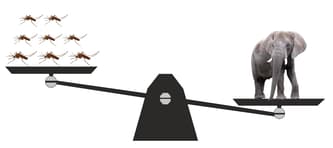Embibe Experts Solutions for Chapter: Exponents and Powers, Exercise 1: Exercise
Embibe Experts Mathematics Solutions for Exercise - Embibe Experts Solutions for Chapter: Exponents and Powers, Exercise 1: Exercise
Attempt the free practice questions on Chapter 12: Exponents and Powers, Exercise 1: Exercise with hints and solutions to strengthen your understanding. THINK ABOVE AND BEYOND MATHEMATICS PRACTICE BOOKS solutions are prepared by Experienced Embibe Experts.
Questions from Embibe Experts Solutions for Chapter: Exponents and Powers, Exercise 1: Exercise with Hints & Solutions
The atomic number of a carbon atom is . The number of protons and electrons in a carbon atom is The weight of a proton is and that of an electron is . Find the product of the weight of all the protons and electrons in the carbon atom.
The galaxy that includes our Solar System, Milky Way, is approximately in diameter. The Indian Space Research Organisation has developed the fastest spacecraft in the world, named Sansara, which can travel with a speed of . Find the time taken by the spacecraft to travel the whole diameter of the Milky Way.
If an average mosquito typically weighs around and an elephant weighs around , then how many mosquitos does it take to weigh as much as an elephant?

The mathematics teacher of class taught a new topic, A perfect cube, which is a number,obtained by multiplying the same integer three times or we can rewrite the expression as , where is a whole number. The teacher bought with her a box which consist of four numbers. One of the numbers is a perfect cube. Help the students to identify the perfect cube.
In today's class, the Mathematics teacher bought with him a box full of numbers, where the numbers are of the form , where . The numbers in the box are and . Arrange the numbers in correct order.
If an average ant weighs and there are around quintillion ants in the world. If a human weighs and there are humans, then find the ratio of total weight of humans to the total weight of ants.
In a chart, the masses of four planets of our Solar System are mentioned as given below:
Mercury:
Venus:
Earth:
Mars:
If the Sun's mass is known to be , then how many combinations of Mercury, Venus, Earth and Mars can fit into one Sun? (Round off to the nearest whole number)
The exponent refers to the number of times a number is multiplied by itself. E.g. .
Find .
